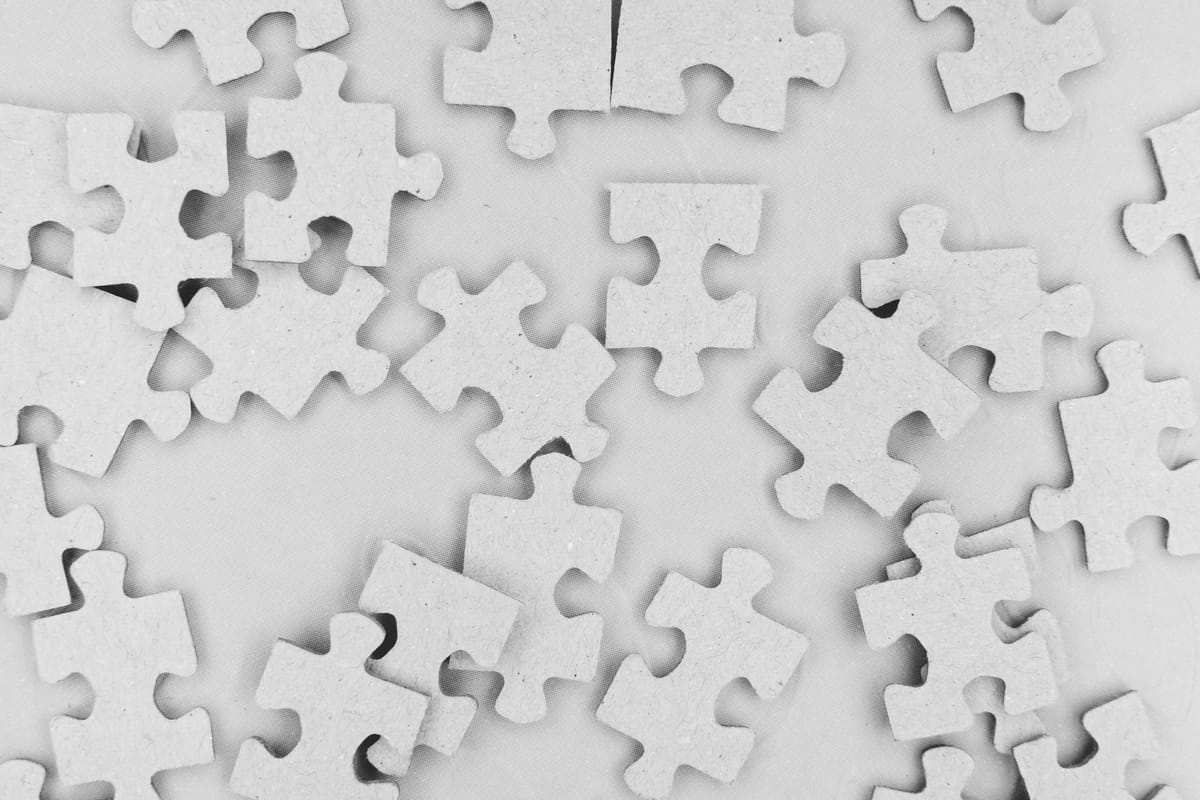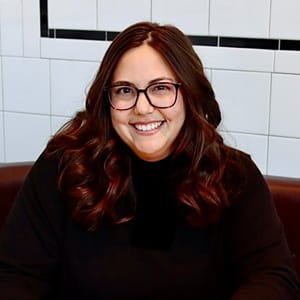This article was taken from Maria's appearance at the Community-Led Summit in Boston.
Unleashing human potential lies at the heart of community-led success.
I’m Maria Pope, Head of Community at Carta, and over my career, I’ve seen how fostering genuine connections within communities can drive transformative impact, not just within companies, but across industries.
Through my journey, I’ve come to believe that community work is a catalyst for change – one that builds a more equitable, inclusive future.
In this article, I’ll walk through the roadmap for community success, sharing insights into setting meaningful goals, sustaining the leader’s well-being, and creating lasting support systems.
The power of community work
The community field has transformed in the last decade. When I started my career, community building wasn’t even on the radar as a formal role. Today, it’s an established, growing profession.
But why do we choose to work in community? The answer, for me, is simple yet profound: it’s all about unleashing human potential.
Yes, we work for companies with goals and bottom lines. But at the core, community leaders like us are here to connect, facilitate, and inspire growth across a wide range of industries.
I work in finance, but others in this field bring community to sectors like travel and customer success. No matter the industry, we’re all focused on empowering others to reach their potential and achieve greater things.
At Carta, I have the privilege of working in private markets, engaging with entrepreneurs and investors who drive innovation and economic growth. This is just one way I get to witness and contribute to the unleashing of human potential, a concept that is deeply meaningful to me.
For us in community, the vision is clear: we see a future yet to be realized. We believe that by investing in our communities, we’re working toward a more equitable world.

Building community at Carta
At Carta, we’re working to create a supportive community for entrepreneurs and investors alike. Carta is a B2B SaaS fintech company that serves the private market ecosystem. We help entrepreneurs manage their cap tables — essentially, digitalizing ownership records that used to be stored on paper in file cabinets. This modernization brought a new level of transparency and accessibility to founders and their early stakeholders, from investors to early employees.
Our initial focus was on serving founders, but as we grew, we recognized the importance of engaging the entire private market ecosystem, including venture capital (VC) investors.
Now, we cater to both founders and funders, which allows us to create a more robust infrastructure for private markets. Working in the marketing organization at Carta, my role is to "bring the soul of Carta to market." This means sharing our mission, our passion, and our commitment to a more equitable world through broadening access to ownership in companies.
Our work at Carta is guided by a theory of change. We believe that by supporting founders and funders, we’re fostering new wealth creation, ultimately contributing to a more equitable world. Our vision for equity isn’t just about venture-backed companies like Klaviyo or Carta itself; it extends to everyone, including smaller businesses on the streets of our neighborhoods.
Carta recently launched an LLC product to support these everyday entrepreneurs. From startups seeking their first round of funding to companies on the path to IPO, we’re here for the entire spectrum.
The impact of community work at Carta
This mission-driven approach resonates deeply with me and has roots in my experience at Black Girl Ventures, where I saw firsthand how supporting entrepreneurs could be a catalyst for economic and social change.
The founders we support aren’t just working toward exits or IPOs — achievements that can take a decade or more. They’re also hiring people, building networks, and reinvesting in their own communities.
Through these efforts, I believe we’re helping to create a world where everyone, regardless of background, has the opportunity to build a business and contribute to their community.
My roadmap for community-led success
Over the years, I’ve had the opportunity to manage three distinct communities: Black Girl Ventures, Republic (an investor-focused community in Florida), and now, Carta. Through these experiences, I’ve refined a roadmap for community success.
Each of these communities has taught me something unique, yet they all underscore the importance of an inclusive, mission-driven approach that centers on empowering individuals to build and sustain impactful businesses.
In the sections ahead, I’ll dive deeper into this roadmap, exploring the tools, strategies, and mindset shifts that can help any community thrive. From nurturing early-stage startups to guiding mature companies, these insights can help leaders in any sector build successful, resilient communities.
Charting the path: Setting clear goals
To create a sustainable roadmap for community success, we need clarity on where we’re headed and how we’ll get there.
I lean heavily on strategic planning, drawing from frameworks like the “SPACES” model. If you haven’t explored it, I highly recommend checking out The Business of Belonging, which is a valuable resource for community builders.
This model lays out six key pillars for how community can contribute to business goals, offering a foundation for aligning community impact with overall business objectives.
At Carta, I focus on three pillars within this framework that align directly with our business priorities. I establish clear annual and quarterly goals and ensure they ladder up to our broader business objectives.
Each company’s needs vary — some prioritize product innovation, others drive growth through sales, and some focus on fostering engagement within internal communities. By defining our direction, I have a clearer vision of how our community efforts contribute to the company's growth and mission.
Rallying internal and external allies
Knowing our goals is essential, but equally important is understanding who’s on this journey with us. In community work, our partners are both internal and external.
My internal collaborators at Carta include teams in business development, sales, and marketing, who play crucial roles in aligning our community initiatives with broader company objectives. Building these internal relationships is as vital as engaging with our external community.
Because I lead a small team, I often find myself pitching the value of community internally. This isn’t just about getting buy-in; it’s about clearly communicating the tangible benefits our community initiatives bring. It takes time to build these relationships, but gathering this support means we’re all rowing in the same direction.
Strategies and tactics
With our goals in place and our allies onboard, the next question is how we actually move forward. For me, events and strategic engagements play a central role in building relationships, especially in private markets.
Events — whether in-person or virtual — allow us to connect deeply with our audience. Recently, I’ve experimented with giveaways as a tactic. Launching a giveaway on LinkedIn can feel like a leap of faith, but it’s an engaging way to bring people into the fold.
Building high-touch relationships is especially critical with venture capitalists, who can be tough to engage. Hosting well-designed, elevated events creates spaces for connection and trust-building, which is essential in this sector.
These gatherings are our highways, the main routes that help us reach our goals and build a strong community along the way.
Feedback loops and reflection
As with any journey, it’s easy to veer off course without regular check-ins. Feedback loops are essential for tracking our progress and making necessary adjustments. After every event or initiative, I take the time to reflect: Was this worth the effort? What could be improved? Setting up a system for monthly, quarterly, and annual reflections allows me to stay aligned with our business goals and adapt as needed.
For larger teams, this might mean collaborative discussions, while for someone in my role, it often means individual reflection and then communicating insights to leadership. Maintaining these feedback mechanisms helps ensure we’re on track, allowing us to course-correct when necessary.
Staying energized and flexible
Community work is demanding, but it’s also deeply fulfilling. If we’re not having fun, it’s unlikely the communities we serve will either.
Bringing energy and enthusiasm to our work is essential. Sometimes this means going to events that rejuvenate us or setting aside time for experiences that keep us motivated.
Flexibility is also critical. Just like a road trip with unexpected turns, community work requires adaptability. I plan for this by setting aside flexible budget items. These “to be determined” funds allow me to pivot quickly, adjusting plans when new opportunities or needs arise.
Sustaining energy in community work
On any long road trip, you have to stop to refuel — the same goes for community work. It’s important to pause, recharge, and find ways to stay energized. Whether it’s a quick coffee break, a chat with a colleague, or a moment of quiet reflection, these pit stops keep us going.
We need to fuel not just our programs, but ourselves, as our energy directly impacts the health and vibrancy of the communities we support.
So as we navigate this roadmap, let’s remember the importance of staying aligned, remaining adaptable, and ensuring we’re enjoying the ride. The road may be winding, but with the right approach, we’re equipped to reach our destination and inspire those along for the journey.

Prioritizing the health of the leader
As community leaders, we often focus on the people we serve, our companies, and our goals. But one of the most essential — yet often overlooked — parts of community work is the health and well-being of the leader: you.
Without nurturing ourselves, the work and communities we strive to build won’t reach their full potential.
So, here’s my challenge: who is your community? We spend so much time thinking about the people we support, but who supports you? Who are those individuals in your life, both professionally and personally, that help you recharge and check in on your well-being?
They could be colleagues, a close friend, a spouse, or even mentors who understand the demands of your role. These are the people who can sense when you’re feeling drained, stuck, or in need of a breakthrough.
If it helps, consider creating your own "board of directors," your own C-suite. These are the people you go to for advice on big decisions, the ones who help you stay grounded and keep you aligned with your values. Building a personal support network — your own community — is essential to sustaining your energy and enthusiasm.
Building sustainable habits
I’ve been exploring and implementing what I call “rhythms for renewal” — sustainable practices that allow me to recharge regularly. Instead of waiting until burnout strikes, I plan for these moments proactively.
Here’s how I approach it:
- Annual and quarterly renewal: I schedule time off in advance, rather than using personal time reactively. For example, I set aside at least one day per quarter for myself. If I don’t need it when the time comes, that’s fine; but if I do, it’s already booked.
- Flexing work hours: Community work often involves events outside regular work hours — dinners, happy hours, conferences. These events require significant energy, sometimes more than a standard workday. So, I flex my hours accordingly. I make sure to take time off or adjust my schedule after intensive events, which helps maintain my energy levels.
- Setting boundaries at conferences: Conferences are a perfect opportunity to invest in yourself — to learn, grow, and connect with other community professionals. I’ve learned (sometimes the hard way) that it’s essential to fully immerse in these moments. So I turn off Slack, silence email notifications, and let go of the need to manage my online community while attending an event. This boundary helps me stay present, absorb more, and make the most of the experience.
Fueling yourself to fuel others
Community work is all about creating spaces where people feel connected and valued. But we can’t do that effectively if we’re running on empty.
Like any road trip, you need to refuel along the way. Make regular stops — “pit stops” — that replenish your energy and keep you grounded. These moments don’t just help you; they ensure you have the capacity to give back to your community in a meaningful way.
Investing in your own growth, health, and well-being isn’t selfish; it’s essential. Our communities are resilient, but their potential is magnified when we, as leaders, are energized, supported, and present.
So take care of yourself, plan for rest, and remember that thriving as a leader is the key to helping your community thrive as well.
Let’s do this together
As community builders, we’re here to bring people together, and this work isn’t meant to be done in isolation.
But the irony is that we often lack the support systems we help create for others. We’re the ones constantly giving, creating, and pouring out to others, and it’s easy to forget to nurture our own needs.
My final encouragement is this: lean on your fellow community builders. Look around at your team, the people in your field, and the individuals in this space who understand the highs and lows of community work.
Use this network to create sustainable rhythms and support systems for yourself, because ultimately, there is a limit to what we can achieve without taking care of our well-being.
Remember, whether you’re building a community from scratch or joining an established team, this work is a long-term investment. The rewards — for both your organization and your community — grow exponentially over time.
There will be challenging moments, times when it feels like an uphill battle, but breakthrough is always on the horizon.
Find those who are in your corner, who can cheer you on and be your own community. Surround yourself with those who believe in the value of what you’re doing, because this work is catalytic and has the power to create lasting change.
I’m excited to see where the community space goes in the next five to ten years, and I have no doubt that the impact we’re creating now will lay the foundation for a more connected, equitable world. Let’s keep going, together.





